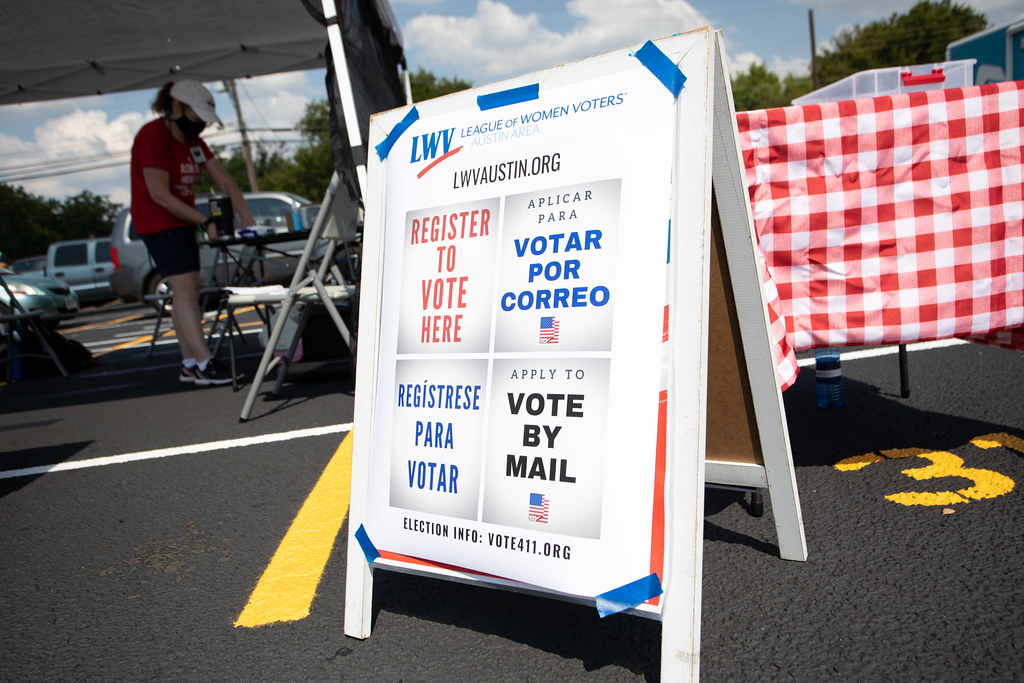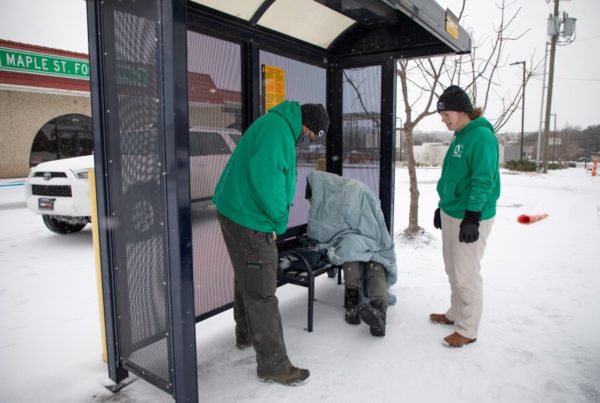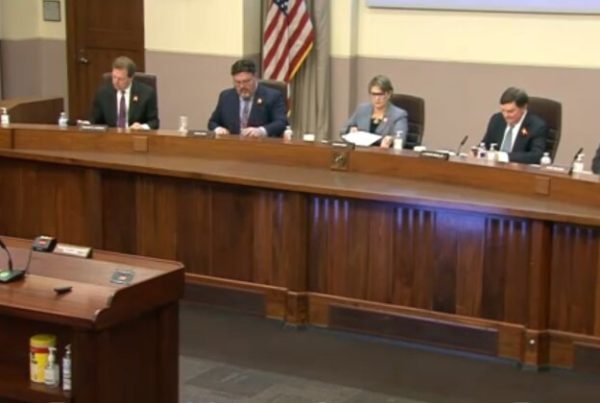Changes made to Texas election law last year as part of Senate Bill 1, along with increased interest in voting by mail, have resulted in confusion about how the process works and what voters must do to verify their eligibility to cast a mail-in ballot.
County officials say that early in the current primary season, they were forced to reject up to 50% of vote-by-mail applications when the ID information on those applications did not match the number a voter had used when they had first registered to vote in Texas. The Texas secretary of state’s office, which administers Texas elections, now provides a tracking site where voters can check and correct their application for a mail-in ballot.
To address questions and confusion about the vote-by-mail process, Texas Standard spoke with Sam Taylor, assistant secretary of state for communications. Listen to an extended version of the interview in the audio player above, or read the interview transcript below.
This interview has been edited lightly for clarity.
Texas Standard: In order to cast a ballot by mail in Texas, you have to meet some very specific eligibility requirements and then apply for a ballot. Can you walk us briefly through what that process is like?
Sam Taylor: First, it’s important for voters to know that in order to vote by mail in Texas, you’ve got to meet certain criteria. Either you are 65 and older, you’re disabled, [or] you are going to be out of the county during the early-voting period and on Election Day. And actually, a new qualification that was added under SB 1 is that if you’re expected to give birth within three weeks of Election Day, you can also vote by mail, and then folks who are incarcerated but otherwise eligible to vote can also vote by mail.
So first, you have to meet those qualifications. And then one of the new requirements is that on the actual application for ballot-by-mail, as well as the carrier envelope that your actual ballot goes into, you have to provide an identification number issued by [the Texas Department of Public Safety] or the last four digits of your Social Security number, or if you haven’t been issued one of those, you just have to check a box saying, I’ve not been issued one of those two, then the early-voting clerk will compare that to your voter registration record. And as long as that information matches what is on your voter-registration record, then you’ll get sent a ballot by mail and your ballot-by-mail will count, once you put that identifying number on the carrier envelope itself.
That DPS identification number of some sort would mean your driver’s license. What else would fall into that category?
Either your driver’s license or your state ID. If you’re not a driver, you can get those issued by DPS. Or there’s another type of ID called the Election Identification Certificate, which issues to people specifically to have a photo ID to vote.
Let’s turn to some listener questions here. One listener wanted to know if a voter who has an active case of COVID-19 is eligible for a mail-in ballot.
That’s a great question, and I know that there was a lot of confusion about that back in in 2020. Essentially, if you have some sort of disability or physical condition that prevents you from going to the polling place without injuring yourself, then you are eligible to vote by mail. But for those voters, we also want to let them know that there is still the curbside voting option. A lot of people have seen headlines about 24-hour and drive-thru voting being banned, but that didn’t do anything to the curbside voting, which is still available to folks who are disabled, who cannot get out of their car. They can actually request that a machine be brought to them and they can vote from their car curbside if they’re disabled.
Under the new election law, voters need to indicate on their ballot application whether they used a driver’s license or state ID number or Social Security number when they first registered to vote. For lots of folks, that could have been many years ago. What happens if you honestly don’t remember which you used. Is there a way to be sure they can get a ballot?
Sure. So there’s actually been a lot of misconception about that. An early version of SB 1 said that it had to be the same number that was on the voter’s original registration record. Of course there was a quorum break, and what eventually became SB 1 went through multiple changes, and where it ultimately ended up is that it just has to identify the same voter. So it doesn’t actually have to be the same exact number that you originally registered with. It just has to match the number that’s on your voter-registration record.
Now, we’ve got about 17.1 million registered voters in Texas, and of those 17.1 million voters, The vast majority – about 96% – have both numbers in their record. So you actually don’t have to remember what you originally registered to vote with. You just have to put a number that matches what’s on your voter-registration record.
What we’re recommending – county officials and our office – is that if you’re unsure, if you only have one on your record, then go ahead and put both. And as long as one of them matches, you will get a ballot by mail.
So, just play it safe and but put both numbers there?
It’s not required, but it can’t hurt.
So we heard early in this cycle from county officials who said they had to reject a great many ballot applications. I think up to 50% was what we were hearing because a voter wasn’t able to indicate which number they used to register. And then your office began adding ID information to voting records provided to counties. Is that right? And has the process of adding driver’s license and Social Security information to database actually been completed now?
Yes. That has helped a lot. That’s the process that we’ve been doing with the Department of Public Safety over the past several months. And actually, the reason why we saw those high rejection rates initially is because a lot of people were using the old forms that didn’t even have a field for that ID information. So folks were using old forms, maybe sent to them by campaigns or third-party groups who hadn’t gotten the updated form for whatever reason. So folks were sending it in and either leaving that section blank or they were just filling out the old version of the form. So they had to be rejected.
Over time, folks, realized that the new form is what’s in place. They started correcting that. And counties got more direction from our office, and we provided some additional guidance on how to process those. We’ve got a new ballot tracker online. The counties have been entering data into that ballot tracker, and as of last Friday, the statewide rejection rate was about 6.7%, so down significantly from what we saw initially because I think a lot of folks were using those old forms or just not putting down an ID number.
What happens if an application to vote by mail is rejected? Under the new law, county officials are limited in the ways they can communicate with voters. So how can the voter actually learn their status, add needed information to their application and reapply?
There’s a couple different ways. So first of all, when the county rejects it, they’re required to send you a Notice of Rejection. And that includes all the instructions on how you can cure that rejection, meaning, add the missing or incorrect ID information that was on the original application. So you’ll get a letter in the mail with that. But if you don’t want to wait for that letter in the mail, you can always go votetexas.gov and click on “Track My Ballot.” And then when you enter the ballot tracker, you enter the information that’s required on that screen. You can actually see where your application is in the process, and if it’s been rejected, you can click “Review” and then “Correct,” and it will add that information to your application for ballot by mail so that the county early-voting clerk can process it correctly and send you a ballot.
I know that there were some delays in getting that site up and running in fully populated. What’s the status now and what can people learn when they actually go there?
Votetexas.gov is kind of our clearinghouse for all voting information. We’re actually in the process of updating it and making it a lot more user friendly. So we’re going to be rolling out a new votetexas.gov layout this week. And it’s going to have all the information that folks need to know for voting in person, voting by mail, what kinds of ID requirements there are for both, and then some other frequently asked questions such as: “How do I become a poll worker?” “How do I become a poll watcher?” “How do I become a student voting clerk?” And all kinds of different ways that you can get involved and get the resources of training through our office.
If a voter isn’t able to go online for whatever reason, how can they first get an application for a mail-in ballot, and, second, check to see when they can expect to receive it?
The best thing to do in that situation would be to contact your [county’s] early-voting clerk. And the early-voting clerk is going to handle all the applications for ballot by mail and the ballots. In some counties, the early-voting clerk is in the county clerk’s office. Some are within what’s called an elections administrator’s office. Now, that’s different from voter registration in some counties. Some counties, like Travis County, have a tax assessor collector who handles registration and a clerk who handles actual voting. So you’ll want to check and call your county office to see if they’ve got an election administrator or if they’ve got a county clerk that handles that office.
That’s where you would request an application for a mail-in ballot by phone, right?
Correct. And under the new law, you have to proactively request an application for a mail-in ballot. County officials don’t just proactively send mail-in ballot [applications] to people who are over 65 anymore – that, under the new law that is prohibited. However, campaigns and third-party organizations are welcome to send those mail-in ballot applications to folks who are over 65 who automatically qualify for voting by mail. Just make sure it is the right form because we’ve had an issue with some campaigns and third-party groups sending out the old form. So look in the top-right corner of that application and make sure there’s a field to put that ID information, so that you’re filling out the right form and it won’t get rejected.
And at the time in which you request that application, I presume you can ask the county officials when you can expect to receive the application?
Yes, absolutely. The counties are really good about sending out those applications that day, if not the next day. Counties are making sure that they get those out as quickly as possible because it’s important for voters by mail to know that that application has to be received by Feb. 18. It’s not a postmark deadline, like the voter-registration application; it’s actually a receipt deadline. So you want to get that in as early as possible so that it’s received by Feb. 18, so that the county can process that application and send you your ballot.
I suppose we should remind people of the deadlines related to voting in the upcoming primary elections. When’s the deadline to submit a vote-by-mail application? And when does that completed ballot need to be returned?
Vote-by-mail applications need to be into your county early-voting clerk by Feb. 18. And just a helpful reminder: that’s the first Friday of the early-voting period. And then, in terms of the actual ballot getting back to your county early-voting clerk, that has to be postmarked by 7 p.m. on Election Day and received by 5 p.m. the day after Election Day.














